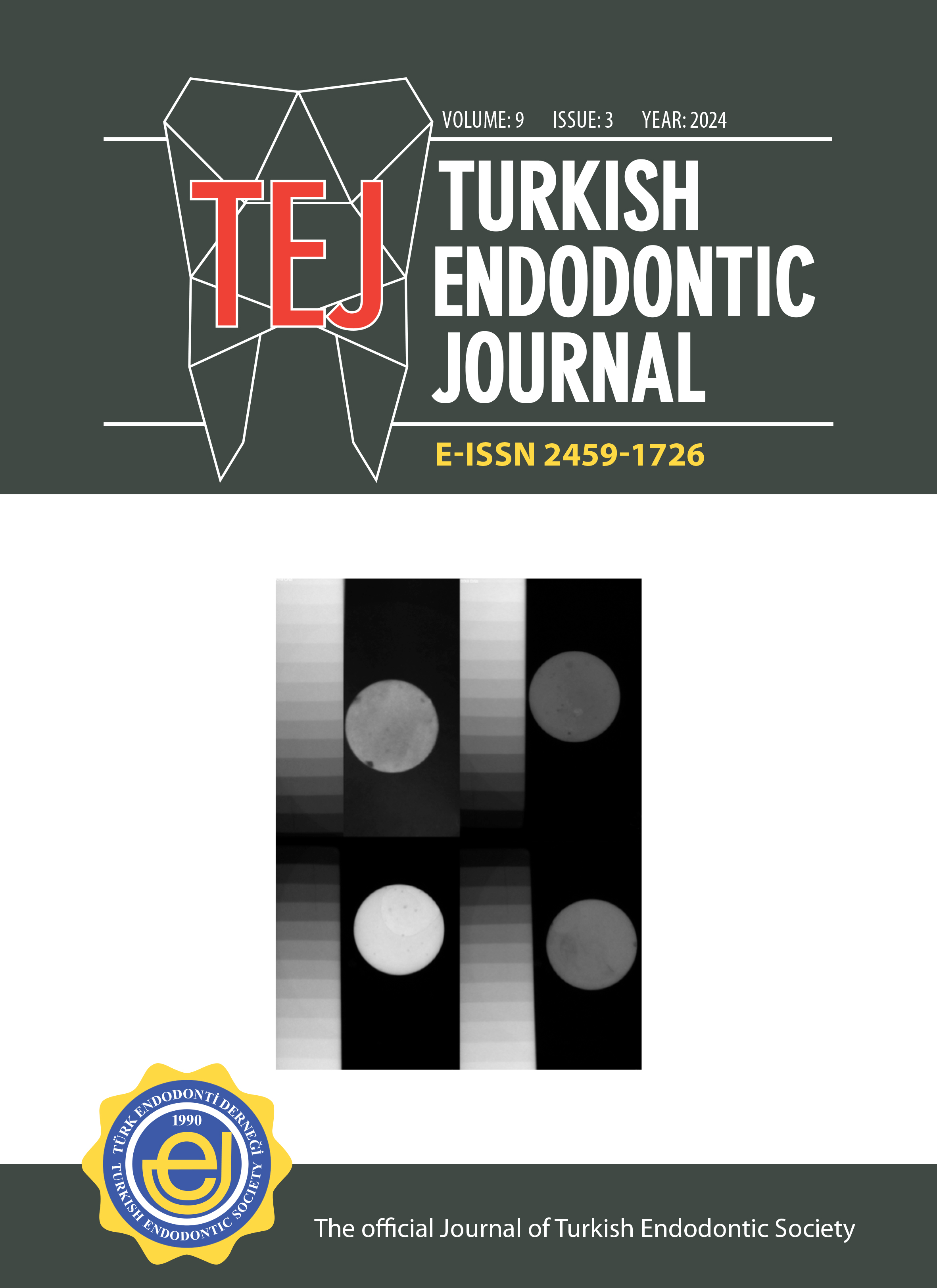Comparison of the radiopacity of NeoSealer Flo, Sure-Seal Root, Guttaflow Bioseal, and AH Plus Jet: An in vitro study
Tugba Kosar1, Davut Celik1, Sinem Esen Mutlu2, Tamer Tasdemir11Department of Endodontics, Faculty of Dentistry, Karadeniz Technical University, Trabzon, Türkiye2Private Clinic, Antalya, Türkiye
Purpose: To compare the radiopacity of two calcium silicate-based sealers (NeoSealer Flo and Sure-Seal Root), a calcium silicate particle-containing silicone (GuttaFlow Bioseal), and an epoxy resin-based root canal sealer (AH Plus Jet) using digital radiography.
Methods: Five samples (1 ± 0.1 mm height, 10 ± 0.1 mm diameter) were prepared for each material tested. After the samples were completely set, digital radiographs of the samples and an aluminum stepwedge were taken. The mean gray values of each sample and aluminum step were calculated using the ImageJ program, and the values were converted into equivalent aluminum thicknesses. Kruskal-Wallis and post-hoc Dunn tests were used to analyze the data.
Results: The radiopacity values of NeoSealer Flo (4.9 mm Al), GuttaFlow Bioseal (4.84 mm Al), and Sure-Seal Root (4.36 mm Al) were significantly lower than those of AH Plus Jet (10.83 mm Al) (p < 0.0001), but there were no significant differences among the three (p > 0.05).
Conclusion: Although the calcium silicate-based and calcium silicate particle-containing siliconebased sealers exhibited lower radiopacity than the resin-based sealer, the radiopacity values of all root canal sealers tested met the minimum Al standard values advised by the International Organization for Standardization and the American National Standards Institute/American Dental Association.
Keywords: Calcium silicate, epoxy resin, radiopacity, root canal sealer, silicone.
Manuscript Language: English



















